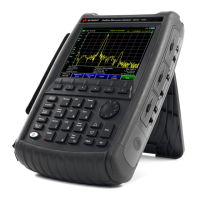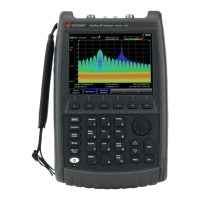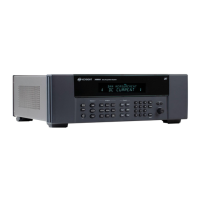Keysight N9927-90001 User’s Guide 585
Noise Figure Mode (Option 356 – CPU2 Only)
Calibration Wizard
Calibration Wizard
The Noise Figure mode has two types of calibration wizard softkeys: Receiver
Cal and User Cal.
To access the calibration wizards:
—Press Cal
then
— Run Receiver Cal
or
— Run User Cal
and then
— follow the prompts
When to Calibrate
Noise Figure has two different calibrations that are important to run,
depending on the type of measurement you are using:
— Receiver calibrations (required for all measurements).
— User calibrations (required, if the setup uses an external preamplifier).
Understanding Receiver and User Calibrations
This section contains the following:
— “Receiver Calibration (Receiver Cal):”
— “User Calibration (User Cal):”
— “User Calibration (User Cal):”
— “Optimizing Measurement Accuracy:”
Receiver Calibration (Receiver Cal):
The receiver calibration's purpose is to establish the true measurement
bandwidth of the receiver when making noise measurements. This bandwidth
information is used to calculate the gain of the DUT when there is no user
calibration. But, if there is a user calibration, the gain calculation is
independent of the receiver bandwidth from the receiver calibration. The
A receiver calibration is required for a user calibration. On the Fieldfox,
after you have completed a user calibration, the User Cal (User Cal)
annotation overwrites the displayed Receiver Cal (Rcvr Cal) annotation.
When there is no preamplifier in the measurement, only a receiver
calibration is required.

